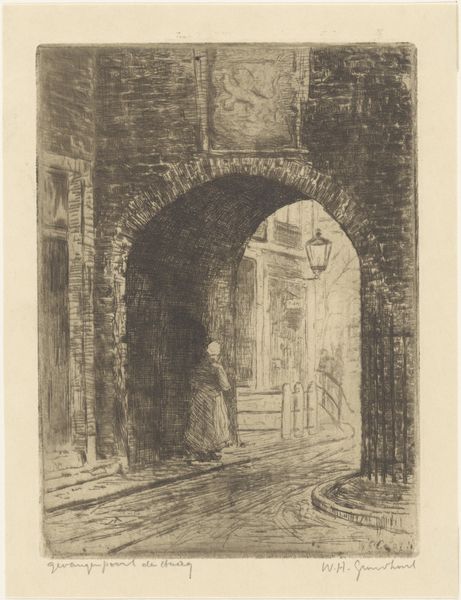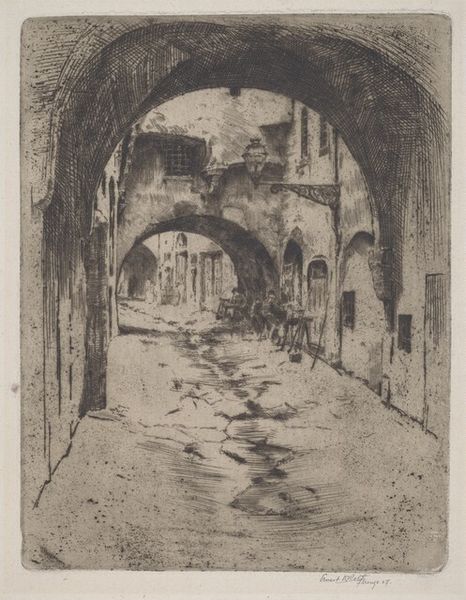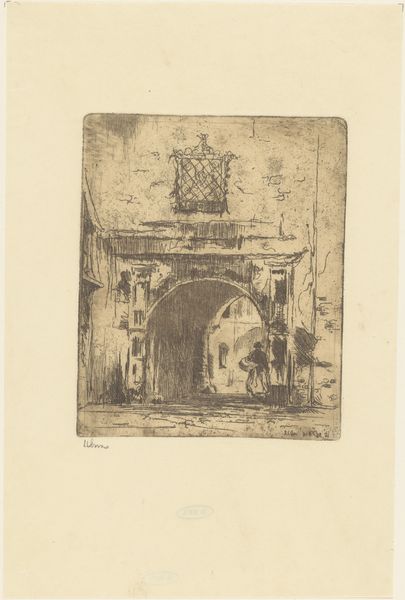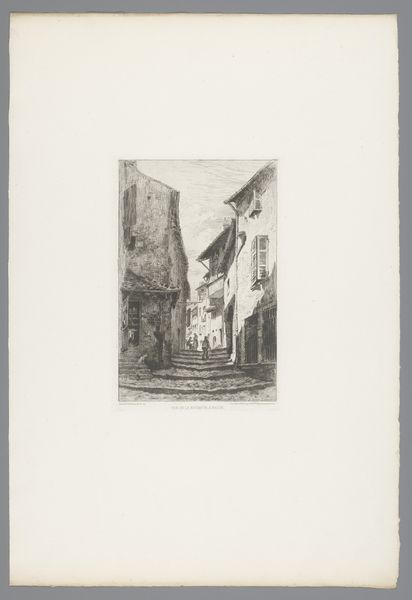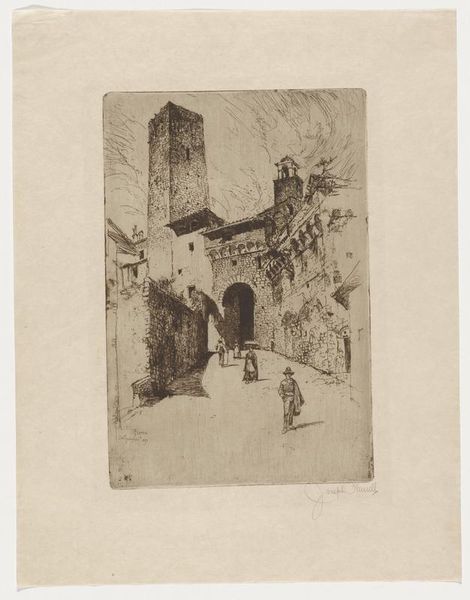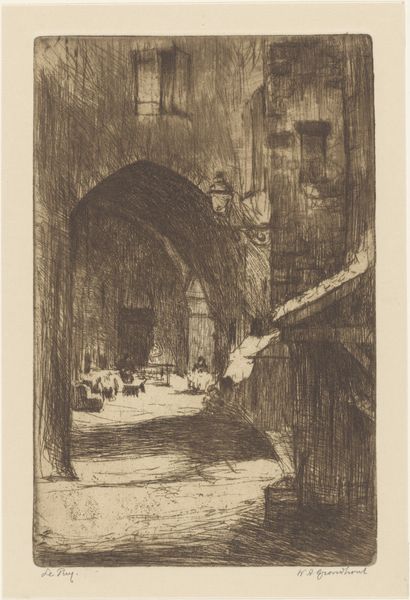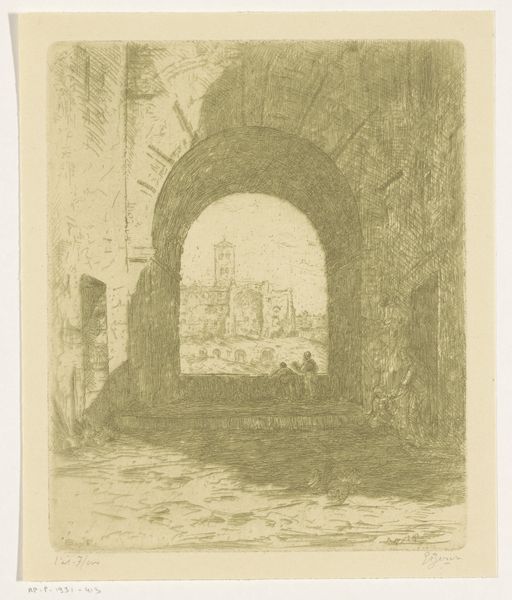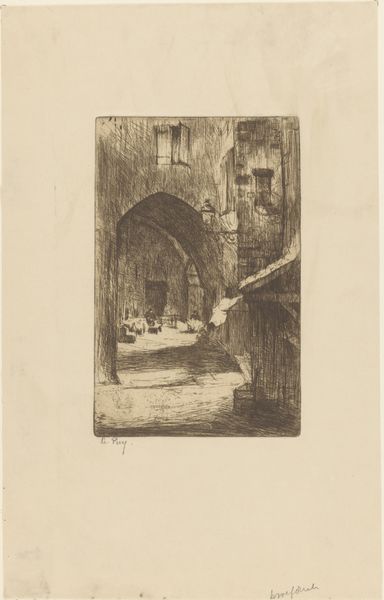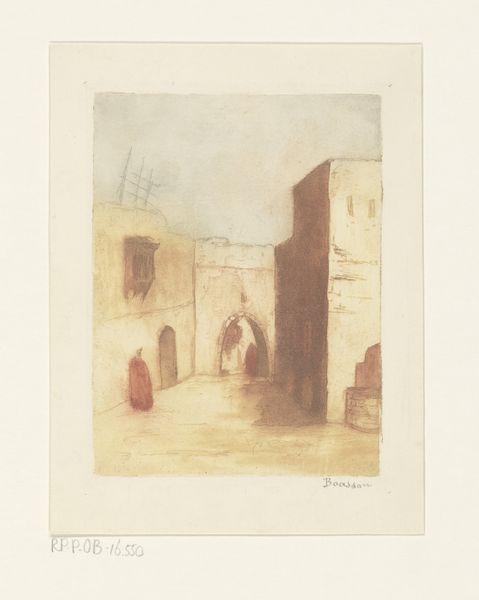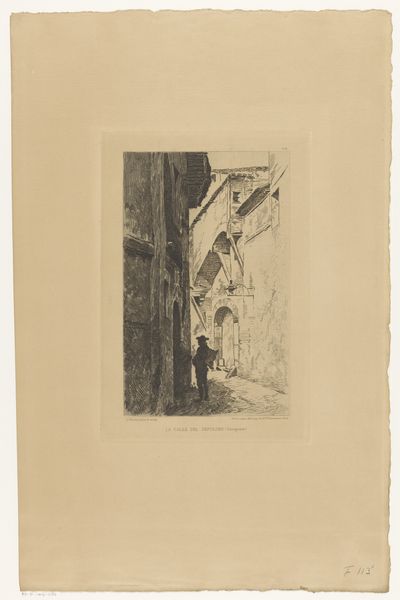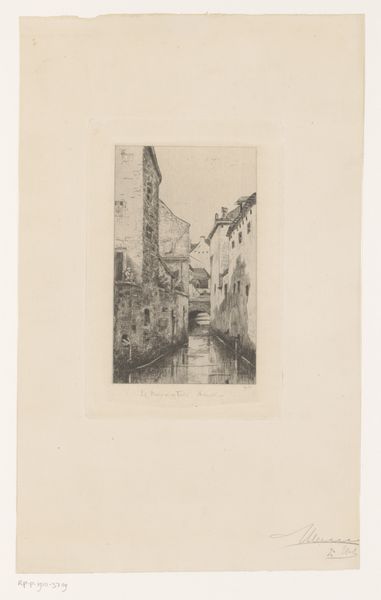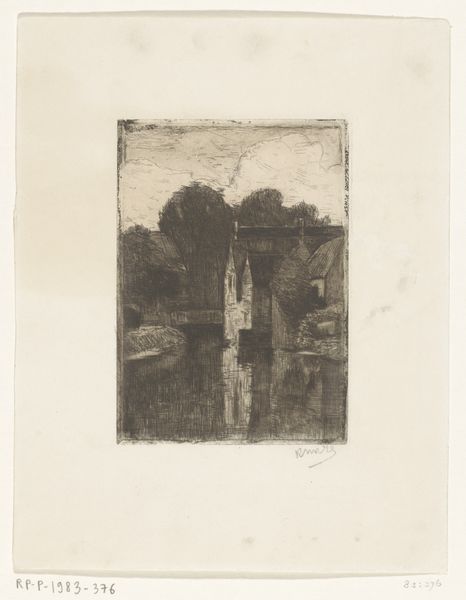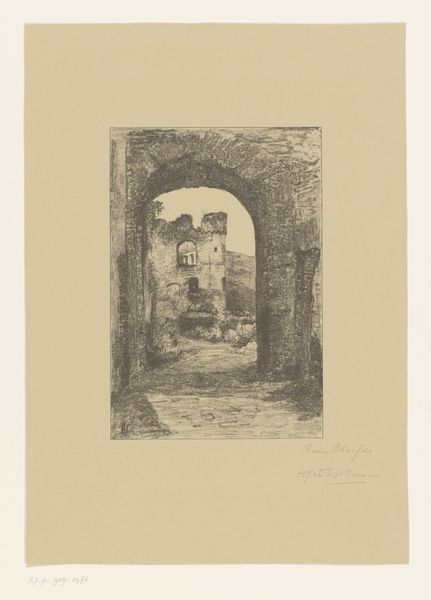
drawing, print, etching
#
drawing
# print
#
etching
#
romanesque
#
linocut print
#
cityscape
#
realism
Dimensions: height 327 mm, width 200 mm
Copyright: Rijks Museum: Open Domain
Editor: This is "Ruelle, Rome" by Etienne Bosch, dating from 1873 to 1931. It’s a drawing, specifically an etching and print. It shows a street scene in Rome with people and buildings. The etching gives the whole image a soft, almost dreamlike quality. What are your thoughts on it? Curator: What strikes me is the interplay between the 'high art' subject matter – a classical Roman scene – and the more humble medium of etching. Consider the labor involved. The artist painstakingly scratched away at a metal plate, probably copper, creating a matrix from which multiple prints could be made. This inherent reproducibility challenges the traditional notion of the unique art object. What do you think that tension tells us? Editor: That's interesting, the mass-producible nature conflicting with its artistic aspirations. So, how does this print, created through this etching process, speak to the consumption of art? Curator: Precisely. The etching process inherently democratizes the image. It allowed Bosch to create multiples, potentially reaching a wider audience than a unique painting. Was he interested in purely aesthetic representation or wider distribution and circulation of imagery? Think about how that accessibility might change the value or function of the image itself within society. It transforms from precious object to shareable commodity, depicting a romantic scene ripe for tourism and commercial exchange. Does it appear the location has been preserved since the etching, or significantly transformed? Editor: Well, it’s hard to say without having been there myself, but from the number of people featured, it strikes me as a vibrant, lively area. I didn't immediately think about mass production until you mentioned it. Curator: Right, so our initial viewing experience is one of pictorial representation rather than the mechanical reproduction involved. However, reflecting on the material process deepens the understanding of its place in a system of commodification and broad distribution, impacting the city it depicts and its artistic interpretation. Editor: I never considered the relationship between its material production and cultural significance so directly. Thanks, I have a lot to think about!
Comments
No comments
Be the first to comment and join the conversation on the ultimate creative platform.
